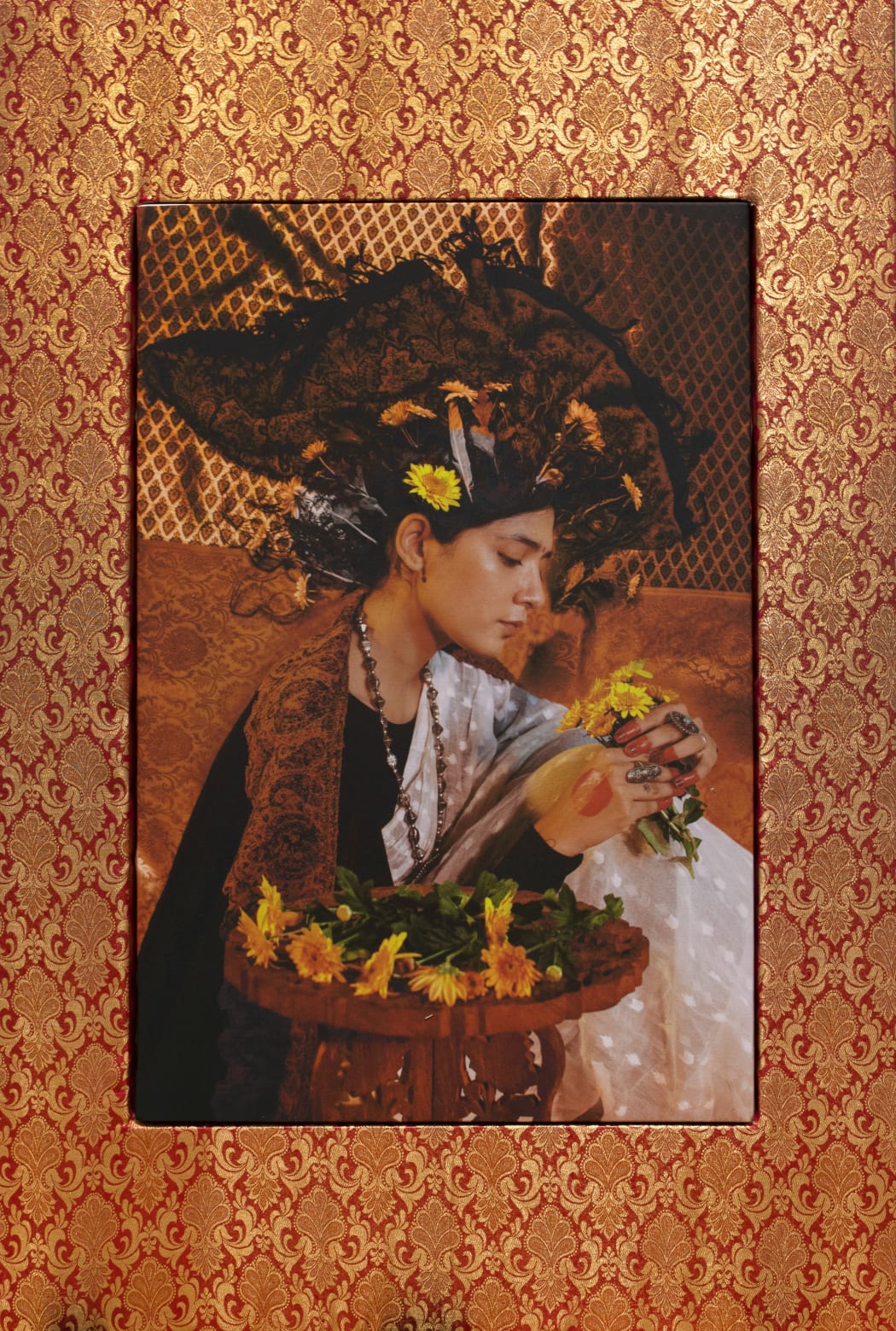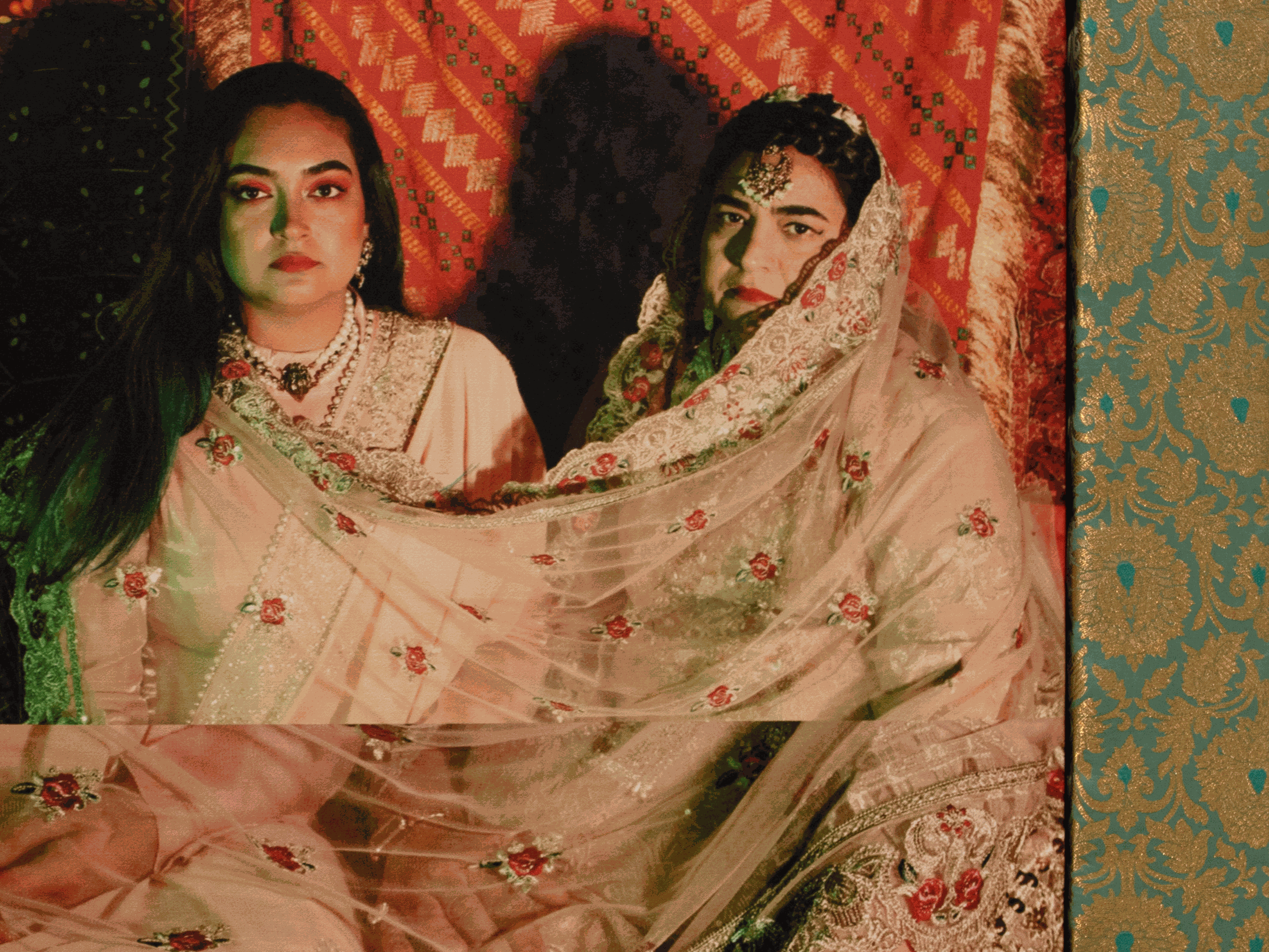
We support a number of artists through RSA Residencies for Scotland, an artist-led scheme which provides valuable research and residency opportunities. Artists taking part conceive and plan their residencies entirely on their own terms, allowing for a period of uninhibited creativity.
In Residence exhibitor and 2023 RSA Morton Award winner Aqsa Arif undertook her residency at Street Level Photoworks in Glasgow. Her resulting work explores the dualities of belonging and displacement, and the process of healing through archetypal storytelling, drawing from her personal experiences as a Pakistani refugee in Scotland. We caught up with Aqsa to learn more about her practice, influences and upcoming projects...
Tell us a little bit about yourself and your practice.
I am a Scottish-Pakistani artist based in Glasgow who uses the interdisciplinary mediums of film, printmaking, photography and poetry. Incorporating these mediums, I construct installations in which I explore themes of dual heritage, migration and cultural dissonance. My practice is deeply inspired by narrative structures built within folklore, mythology and cinematic spaces, exploring this through my own dual identity and displacement to reclaim and re-imagine the pre/post-colonial world.
As a Pakistani refugee to Scotland, I experienced life with the split of two cultural identities. This polarity underpins my work and is manifested through my use of film, which initially helped me navigate a new culture and now serves in the ongoing exploration of my inner and outer worlds. My line of thought derives from a need to express personal and intergenerational trauma. I delve into these difficult themes through the lens of fictional world building as a safe realm for expression, using characters and avatars from abstracted poetic narratives, I immerse the audience within the unconscious, the uncomfortable and the disparate.
You spent your RSA residency at Street Level Photoworks in Glasgow. Could you give us some insight into what you got up to?
During my residency at Street Level Photoworks, my focus centred on exploring the intricate and often surreal psychological journey of South Asian womxn who have resettled in Scotland. This journey entails profound shifts in identity and the intricate process of healing, all portrayed through the lens of archetypal and folk storytelling.
One of the primary outcomes of this residency is a series of large-scale fabric photographs. These visuals form a poetic and surreal narrative, allowing viewers to immerse themselves in the multiplicity of stories and identities of South Asian womxn in Scotland. Specifically, the project seeks to expand upon the theme of shared oppression within the context of "home" and how this concept evolves in the face of displacement or migration.
I initially immersed myself within learning and expanding on my photography skills. I joined the black and white film photography course earlier this year which was exciting, as this was a new process and I wanted to make the most of expanding my skillsets within the residency. While this was an enriching experience, I made a deliberate choice to utilize digital photography for this project. The use of colour and saturation holds great significance within South Asian culture, and I aimed to integrate these elements prominently into the project's aesthetic. In the realm of studio photography, I ventured into set creation, employing jacquard, silks, and richly patterned fabrics. Within this setting, I invited South Asian womxn within my life to share their experiences, focusing on topics of home, belonging, and living with multifaceted identities.
Using this opportunity as a diving board, I embarked on a more in-depth exploration of the experiences of the womxn within my own family as well. This was a generous sharing of their life experiences and time, allowing me to forge a stronger connection with the womxn in my family and a deeper understanding of displacement through these shared narratives. This project has been an insightful journey into the richness of South Asian identity and the resilient stories of womxn who have navigated complex transitions in the context of home and belonging.

In Residence, installation view. Photo Julie Howden.
Are there any particular lessons you learned during your time at Street Level Photoworks? Either things that worked well, or mistakes you made along the way, things that might inform your future practice?
My time at Street Level Photoworks was a crucial learning experience as I have been working with lots of collaborators who have entrusted me to share their experiences. I found immense joy in this collaborative way of working, but also found it a challenge to ensure I was holding and sharing their stories within a system of respect, integrity and care. I learned a lot about how to build this system of care within the process and have now integrated this into my practice.
Managing my time effectively while ensuring dedication to each participant was often a delicate balance. However, this process allowed me to appreciate the importance of transparency and time management within my artistic practice. It also highlighted the significance of building strong relationships with the sitters beforehand. This not only enhanced the authenticity of the work, but also makes the creative process more rewarding.
Your dual heritage and identity as a Pakistani refugee in Scotland are strong influences for both the photographs on display in In Residence and your practice as a whole. Do you feel this personal experience will continue to inform your work?
My background and experiences within life constantly bleed into my artwork. In the past, this influence was unintentional, as I grappled with the complex emotions and histories tied to my identity and felt too vulnerable to directly address those themes. However, over the years, I've grown to understand and process these traumas and experiences and integrate them into my practice as a way of healing and developing.
I believe that sharing these experiences, emotions, and interests through my art can serve as a means for others with similar backgrounds to relate and connect with their identities. It's a way of giving voice to the overlooked and misunderstood histories of South Asian womxn and exploring the rich collective feminine psyche. By drawing from my own journey and heritage, I aim to contribute to a broader understanding of the intricacies and nuances of these very human experiences, with a particular focus on the resilience and strength of South Asian womxn.

Aqsa Arif, The Jewels of Yesterday (detail).
We’re also delighted to announce that you are the 2023 recipient of the RSA Morton Award! In your proposal, you outlined your plans to use the funds to explore South Asian architecture and the journey of the wedding tradition. Could you expand on these themes and where you envision they will take you?
The RSA Morton Award is a tremendous honour, and I am excited to embark on the journey it will fund. Within this new work, I will be exploring South Asian architecture and journey of the wedding tradition in relation to pre/post-colonial and diaspora traditions, researching traditional folk stories, oral histories, archival records and community engagement. Specifically, I am fascinated by the 18th-century folk stories of the Seven Queens of Sindh, who have greatly shaped the cultural identity of the region.
As a female artist with dual heritage, I am drawn to the significant role womxn have played in shaping cultural identity throughout history. However, I am also aware of the cultural impositions placed on womxn through marriage. Weddings hold immense political significance in South Asia, representing power, inheritance, legacy, and honour within society. My work aims to unravel these themes and understand the evolution of this tradition from pre-colonial Mughal rule to post-partition religious separation, as well as its impact on diaspora communities in Scotland.
And finally, tell us a little bit about your next project! Are you working on anything at the moment that we can keep an eye out for?
I’m currently finalising my first solo exhibition, "Anam ki Almari (The Trophy Cupboard)", which will be on display at the Kelvingrove Art Gallery and Museum from 2 November - April. This project is the result of a year-long residency at Kelvingrove, supported through the national commissioning initiative, 20/20, by UAL's Decolonising the Arts Institute.
This project is a multimedia exploration that combines film installation and ceramic works. It delves into the intricacies of South Asian ornamentalism within the context of the museum, shedding light on the narratives behind the objects held in their collections. Throughout this work, I've delved into the exploration of South Asian rituals, traditions, and the collective act of creation. It's been an incredibly cathartic but challenging journey to reclaim the colonial gaze that has often dominated narratives surrounding these cultural artifacts.
"Anam ki Almari" represents my most significant work to date, and it has been a collaborative effort involving a host of talented individuals. I've had the privilege of working closely with generous South Asian community groups and creatives in Glasgow who have contributed to the development of this work. This project is a testament to the power of collective creativity and the importance of sharing diverse narratives within the artistic and cultural landscape in Scotland.
Explore In Residence: New work from RSA Residencies for Scotland Artists in the gallery and online until Sunday 5 November.
